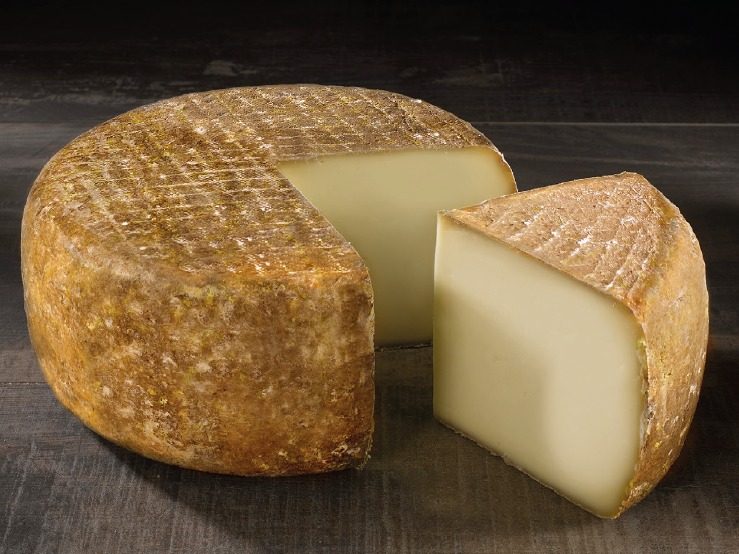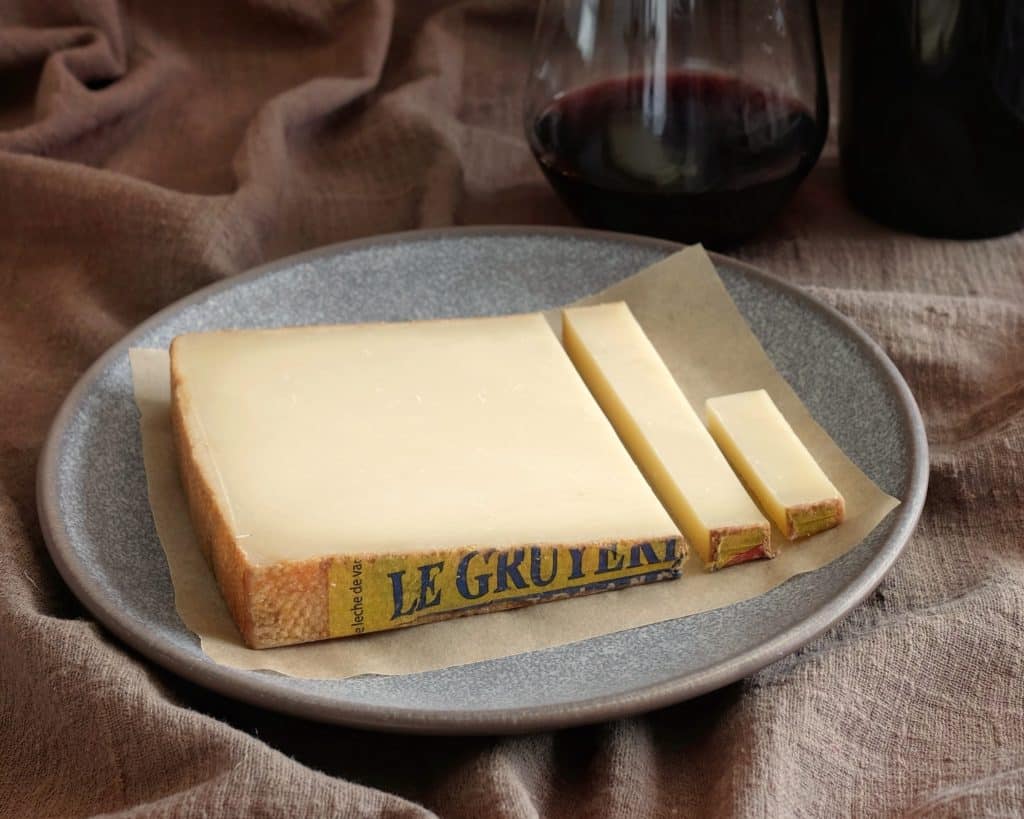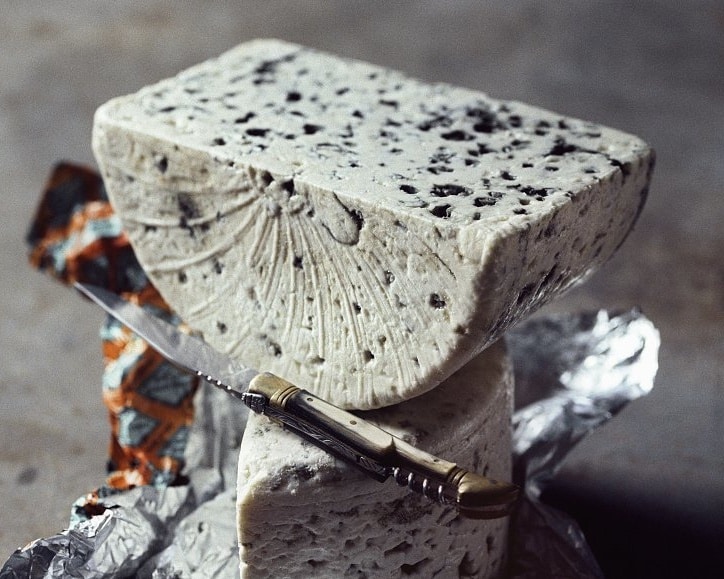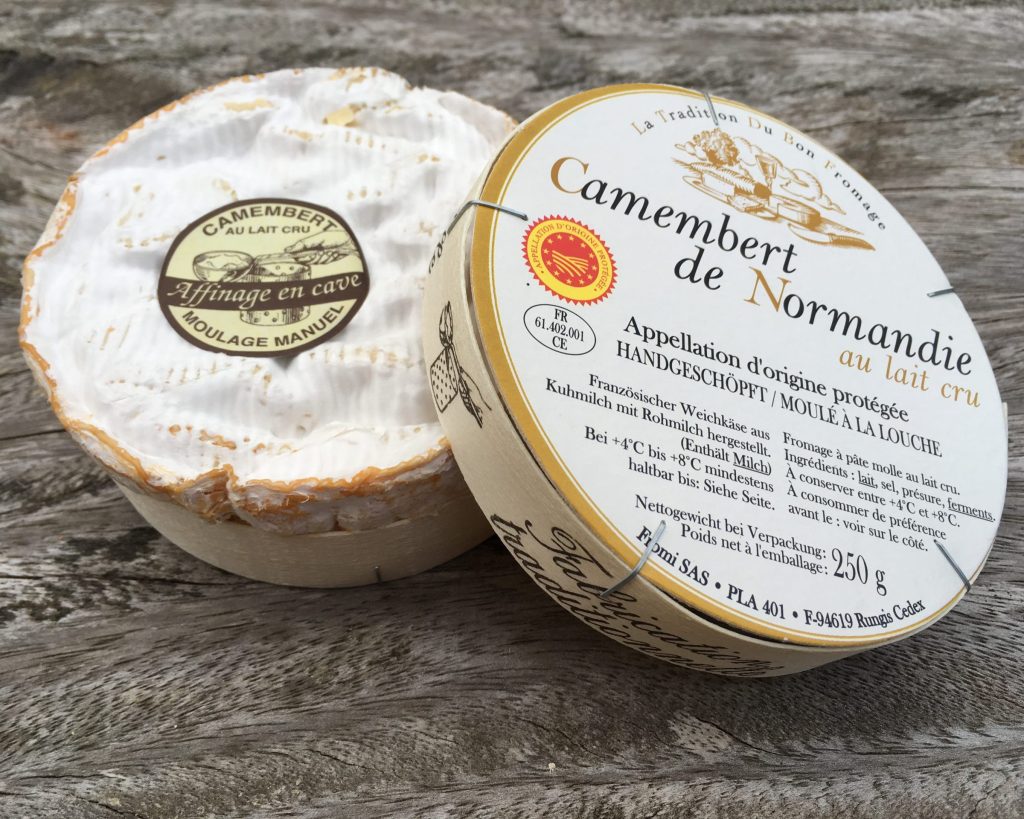France is renowned for its blue cheeses. And few of them are as famous as the AOP stamped Bleu d’Auvergne. Read on to learn about this cow’s milk blue cheese. And find out how best to serve it.
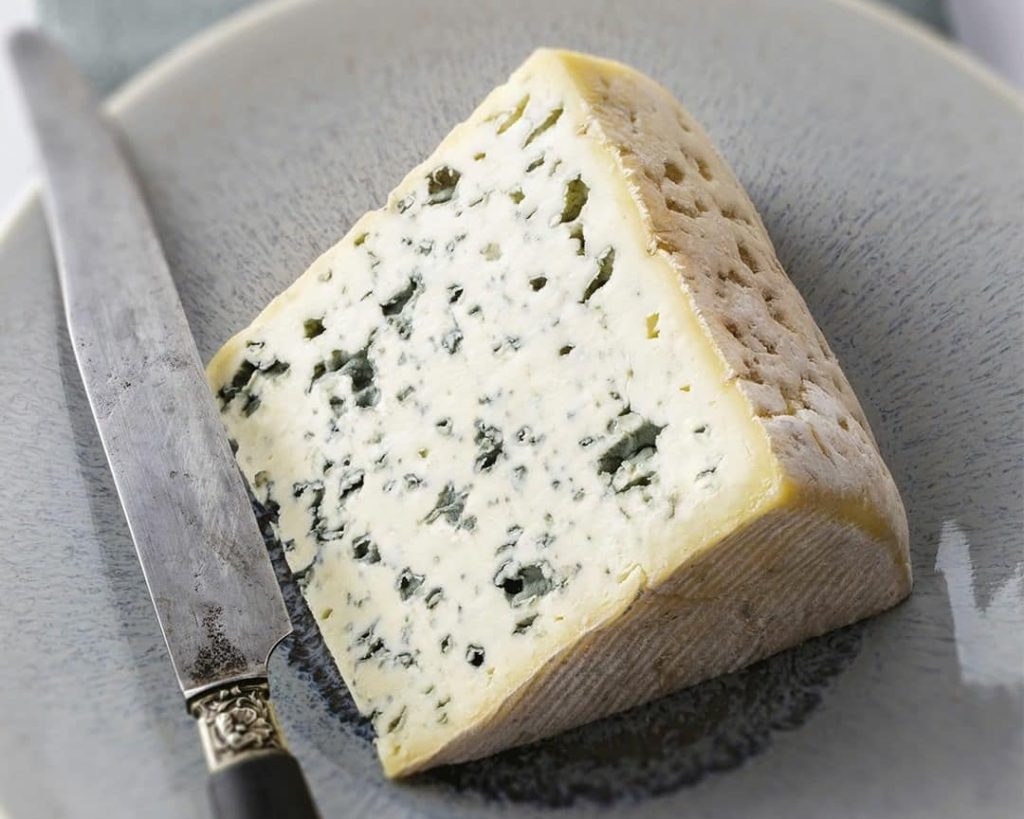
Where does Bleu d'Auvergne come from?
Bleu d’Auvergne is a blue cheese that is made from cow’s milk in the Auvergne region of central France. It has a semi-soft paste with a crumbly texture and a characteristic blue-green mould that is present throughout the interior of the cheese.
The production of Bleu d’Auvergne is regulated by the Appellation d’Origine Protégée (AOP), which ensures that the cheese is made using traditional methods and that it meets certain quality standards. This means that local producer must use milk that comes from specific breeds of cow. And every step of production and maturation takes place within the Auvergne region.
How is Bleu d'Auvergne made?
To make this blue cheese, the cheesemaker first heats their milk to a temperature of about 32-35°C (90-95 °F). Afterwards, they add a combination of Penicillium roqueforti and Penicillium glaucum mould spores, which will eventually form the blue veins. The curds are then separated from the whey, and are pressed into moulds to form the cheese. Finally, an affineur will age each wheel of blue cheese for a minimum of four weeks.
Overall, Bleu d’Auvergne has a strong, pungent aroma and a sharp, tangy flavour. The blue-green mould that is present throughout the interior of the cheese gives it a distinct, spicy taste that is often described as “peppery” or “nutty.”
How to serve Bleu d'Auvergne
As always, you will want to serve your cheese at room temperature. Since its flavour is so complex, Bleu d’Auvergne can be eaten on its own as a table cheese. Or you can pair it with a variety of foods and drinks. Some great options here include pear, apple and figs. As well as nuts such as walnut and hazelnut. Finally, pour yourself a class of Syrah or Pinot Noir, or a pint of Stout or Porter.
Bleu d’Auvergne is a great addition to salads, sandwiches, and pasta dishes, and it can also be melted and used as a topping for pizza or a filling for omelettes.
Thank you for reading
Thank you for reading this post about yet another amazing artisanal cheese. Have you tried this cheese before? Drop us a comment below with your thoughts.
If you enjoy learning about new cheeses, you can subscribe to our newsletter below. You will hear from us about once a week as we share new cheese profiles with you.
Finally, keep scrolling to find some more cheeses and recipes that have been recommended for you. Keep it cheesy!
